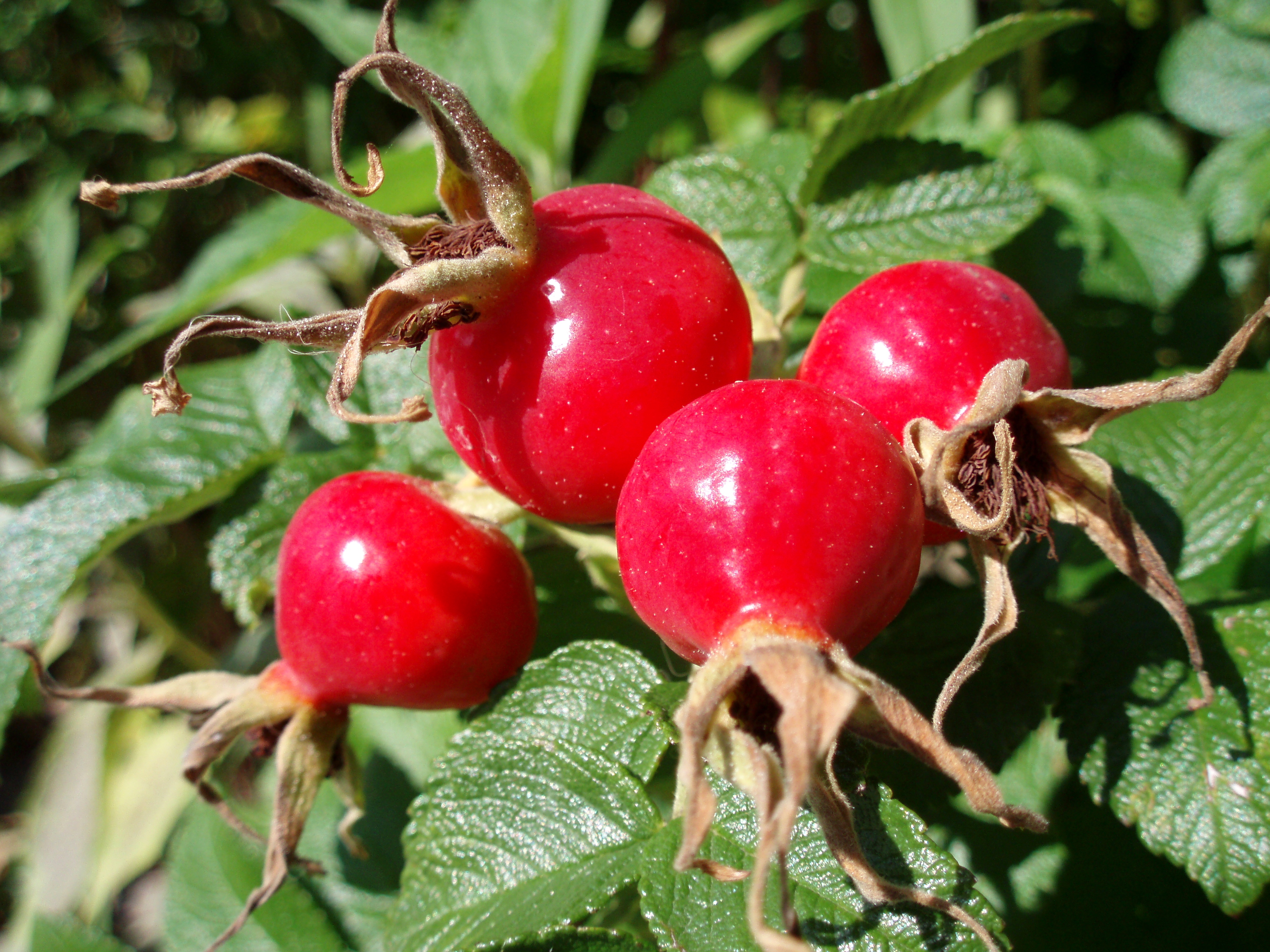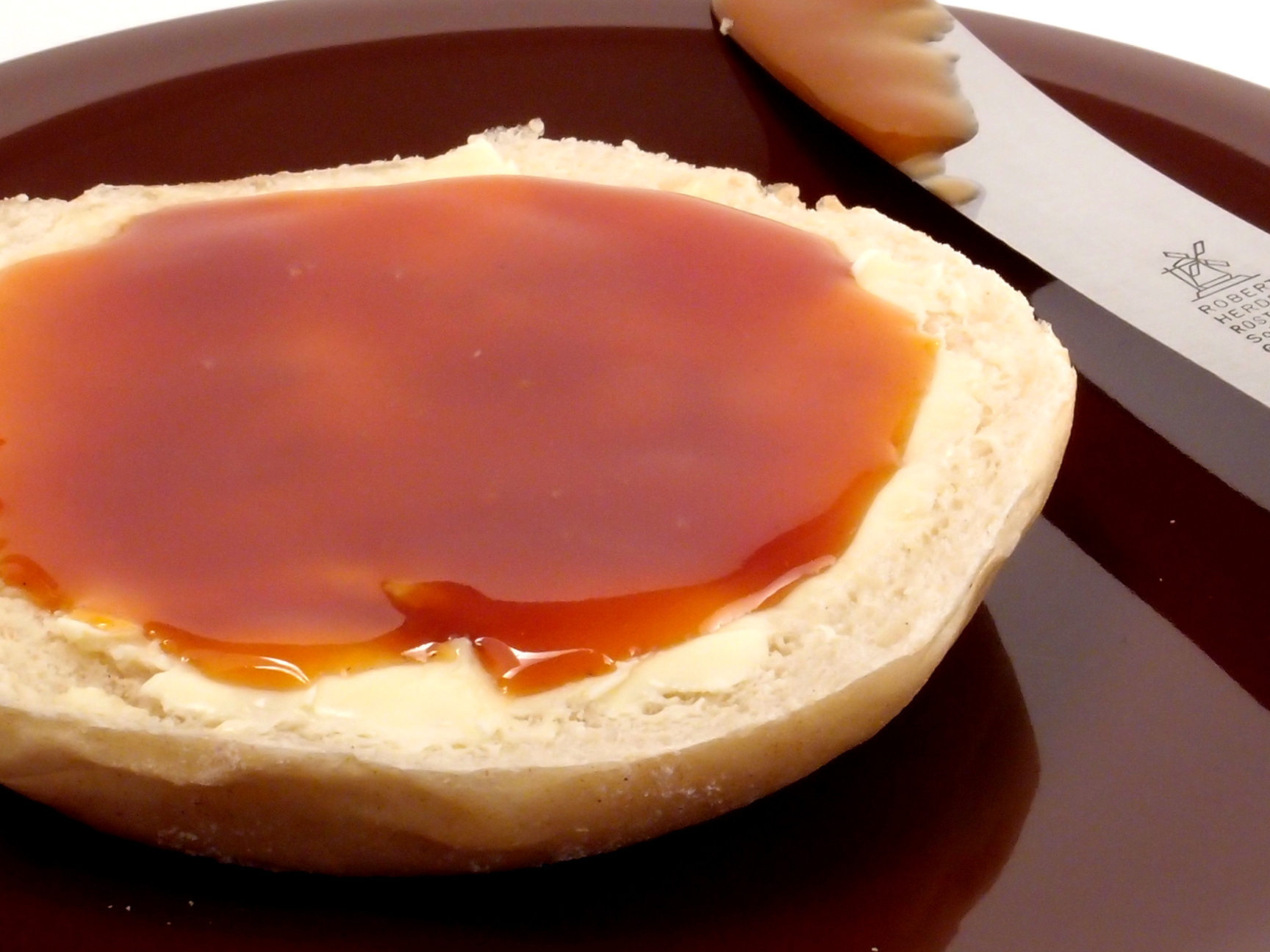Rosehip on:
[Wikipedia]
[Google]
[Amazon]

 The rose hip or rosehip, also called rose haw and rose hep, is the accessory fruit of the various species of
The rose hip or rosehip, also called rose haw and rose hep, is the accessory fruit of the various species of
 Rose hips are used in
Rose hips are used in

 The rose hip or rosehip, also called rose haw and rose hep, is the accessory fruit of the various species of
The rose hip or rosehip, also called rose haw and rose hep, is the accessory fruit of the various species of rose
A rose is either a woody perennial plant, perennial flowering plant of the genus ''Rosa'' (), in the family Rosaceae (), or the flower it bears. There are over three hundred Rose species, species and Garden roses, tens of thousands of cultivar ...
plant. It is typically red to orange, but ranges from dark purple to black in some species. Rose hips begin to form after pollination
Pollination is the transfer of pollen from an anther of a plant to the stigma (botany), stigma of a plant, later enabling fertilisation and the production of seeds. Pollinating agents can be animals such as insects, for example bees, beetles or bu ...
of flowers in spring or early summer, and ripen in late summer through autumn.
Propagation
Roses are propagated from rose hips by removing theachene
An achene (; ), also sometimes called akene and occasionally achenium or achenocarp, is a type of simple fruit, simple dry fruits, dry fruit produced by many species of flowering plants. Achenes are monocarpellate (formed from one carpel) and Dehi ...
s that contain the seeds from the hypanthium
In angiosperms, a hypanthium or floral cup is a structure where basal portions of the Sepal, calyx, the petal, corolla, and the stamens form a cup-shaped tube. It is sometimes called a floral tube, a term that is also used for corolla tube and cal ...
(the outer coating) and sowing just beneath the surface of the soil. The seeds can take many months to germinate. Most species require chilling ( stratification), with some such as '' Rosa canina'' only germinating after two winter chill periods.
Uses
 Rose hips are used in
Rose hips are used in bread
Bread is a baked food product made from water, flour, and often yeast. It is a staple food across the world, particularly in Europe and the Middle East. Throughout recorded history and around the world, it has been an important part of many cu ...
and pies, jam, jelly, marmalade, syrup
In cooking, syrup (less commonly sirup; from ; , beverage, wine and ) is a condiment that is a thick, viscous liquid consisting primarily of a Solution (chemistry), solution of sugar in water, containing a large amount of dissolved sugars but ...
, soup
Soup is a primarily liquid food, generally served warm or hot – though it is sometimes served chilled – made by cooking or otherwise combining meat or vegetables with Stock (food), stock, milk, or water. According to ''The Oxford Compan ...
, tea, wine
Wine is an alcoholic drink made from Fermentation in winemaking, fermented fruit. Yeast in winemaking, Yeast consumes the sugar in the fruit and converts it to ethanol and carbon dioxide, releasing heat in the process. Wine is most often made f ...
, and other beverage
A drink or beverage is a liquid intended for human consumption. In addition to their basic function of satisfying thirst, drinks play important roles in human culture. Common types of drinks include plain drinking water, milk, juice, smoothie ...
s.
Rose hips can be eaten raw, like berries, if care is taken to avoid the hairs inside the fruit. These urticating hairs are used as itching powder.
A few rose species are sometimes grown for the ornamental value of their hips, such as ''Rosa moyesii
''Rosa moyesii'' is a species of flowering plant in the rose family ''Rosaceae''. It is native to western China. Growing to tall by wide, it is a vigorous deciduous shrub, with plentiful matte green leaves and flat red or pink flowers, with ye ...
'', which has prominent, large, red bottle-shaped fruits. '' Rosa macrophylla'' 'Master Hugh' has the largest hips of any readily available rose.
Rose hips are commonly used in herbal tea, often blended with hibiscus
''Hibiscus'' is a genus of flowering plants in the Malva, mallow family, Malvaceae. The genus is quite large, comprising List of Hibiscus species, several hundred species that are Native plant, native to warm temperate, Subtropics, subtropical ...
. An oil is also extracted from the seeds. Rose hip soup, known as in Swedish, is especially popular in Sweden. Rhodomel, a type of mead
Mead (), also called honey wine, and hydromel (particularly when low in alcohol content), is an alcoholic beverage made by fermenting honey mixed with water, and sometimes with added ingredients such as fruits, spices, grains, or hops. The alco ...
, is made with rose hips.
Rose hips can be used to make , the traditional Hungarian fruit brandy
Brandy is a liquor produced by distilling wine. Brandy generally contains 35–60% alcohol by volume (70–120 US proof) and is typically consumed as an after-dinner digestif. Some brandies are aged in wooden casks. Others are coloured ...
popular in Hungary, Romania, and other countries sharing Austro-Hungarian history. Rose hips are also the central ingredient of cockta, the fruity-tasting national soft drink of Slovenia
Slovenia, officially the Republic of Slovenia, is a country in Central Europe. It borders Italy to the west, Austria to the north, Hungary to the northeast, Croatia to the south and southeast, and a short (46.6 km) coastline within the Adriati ...
.
Dried rose hips are also sold for crafts and home fragrance purposes. The Inupiat mix rose hips with wild redcurrant and highbush cranberries and boil them into a syrup.
Nutrients and research
Wild rose hip fruits are particularly rich invitamin C
Vitamin C (also known as ascorbic acid and ascorbate) is a water-soluble vitamin found in citrus and other fruits, berries and vegetables. It is also a generic prescription medication and in some countries is sold as a non-prescription di ...
, containing 426 mg per 100 g or 0.4% by weight (w/w). RP-HPLC assays of fresh rose hips and several commercially available products revealed a wide range of L-ascorbic acid (vitamin C) content, ranging from 0.03 to 1.3%.
Rose hips contain the carotenoids beta-carotene, lutein, zeaxanthin, and lycopene
Lycopene is an organic compound classified as a tetraterpene and a carotene. Lycopene (from the Neo-Latin '' Lycopersicon'', the name of a former tomato genus) is a bright red carotenoid hydrocarbon found in tomatoes and other red fruits and ve ...
. A meta-analysis
Meta-analysis is a method of synthesis of quantitative data from multiple independent studies addressing a common research question. An important part of this method involves computing a combined effect size across all of the studies. As such, th ...
of human studies examining the potential for rose hip extracts to reduce arthritis pain concluded there was a small effect requiring further analysis of safety and efficacy in clinical trial
Clinical trials are prospective biomedical or behavioral research studies on human subject research, human participants designed to answer specific questions about biomedical or behavioral interventions, including new treatments (such as novel v ...
s. Use of rose hips is not considered an effective treatment for knee osteoarthritis
Osteoarthritis is a type of degenerative joint disease that results from breakdown of articular cartilage, joint cartilage and underlying bone. A form of arthritis, it is believed to be the fourth leading cause of disability in the world, affect ...
.
See also
* Rose hip seed oil *'' Rosa moschata'' *''Rosa rubiginosa
''Rosa rubiginosa'' (sweet briar, sweetbriar rose, sweet brier or eglantine; synonym (taxonomy), syn. ''R. eglanteria'') is a species of rose native to Europe and western Asia.
Description
It is a dense deciduous shrub 2–3 meters high and ac ...
''
*'' Rosa gymnocarpa''
*'' Rosa roxburghii''
References
External links
* {{Authority control Fruit morphology Herbal teas Roses Food ingredients